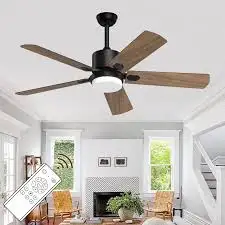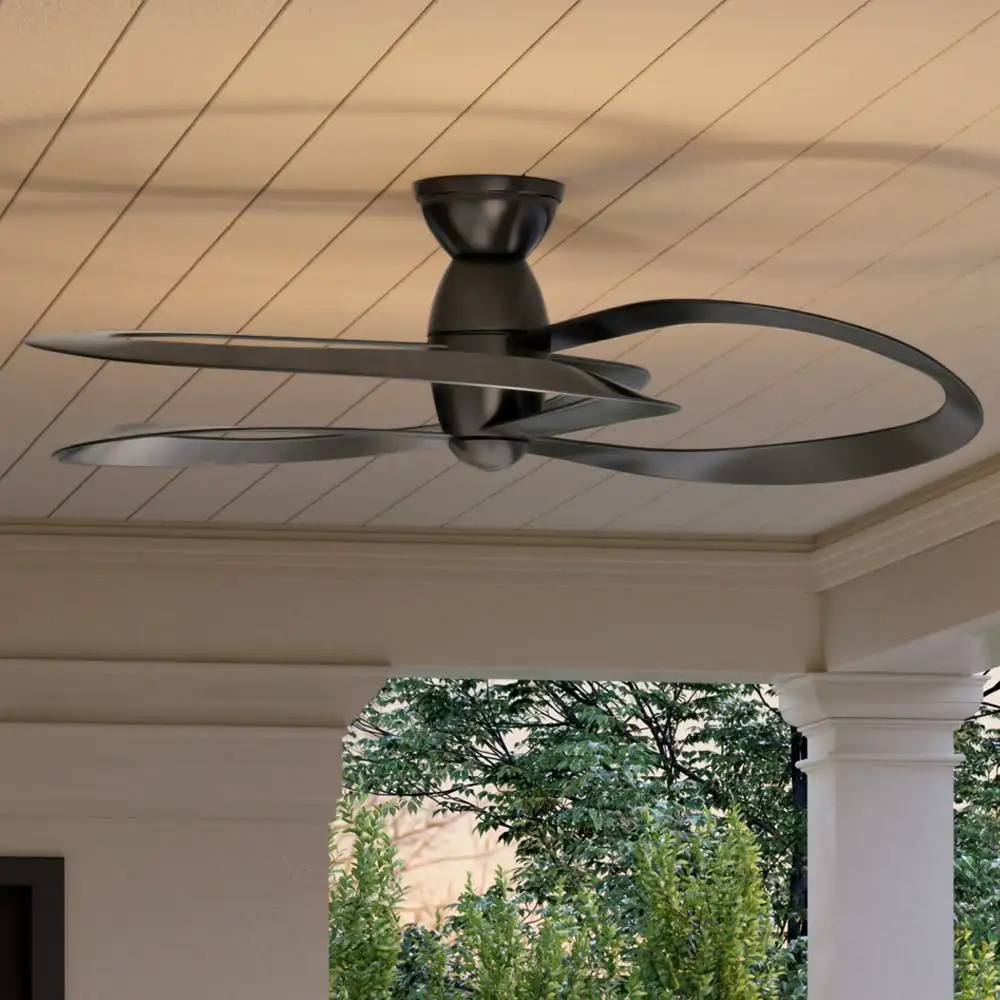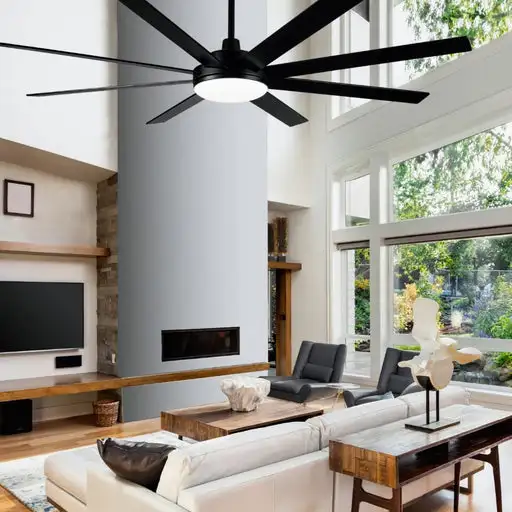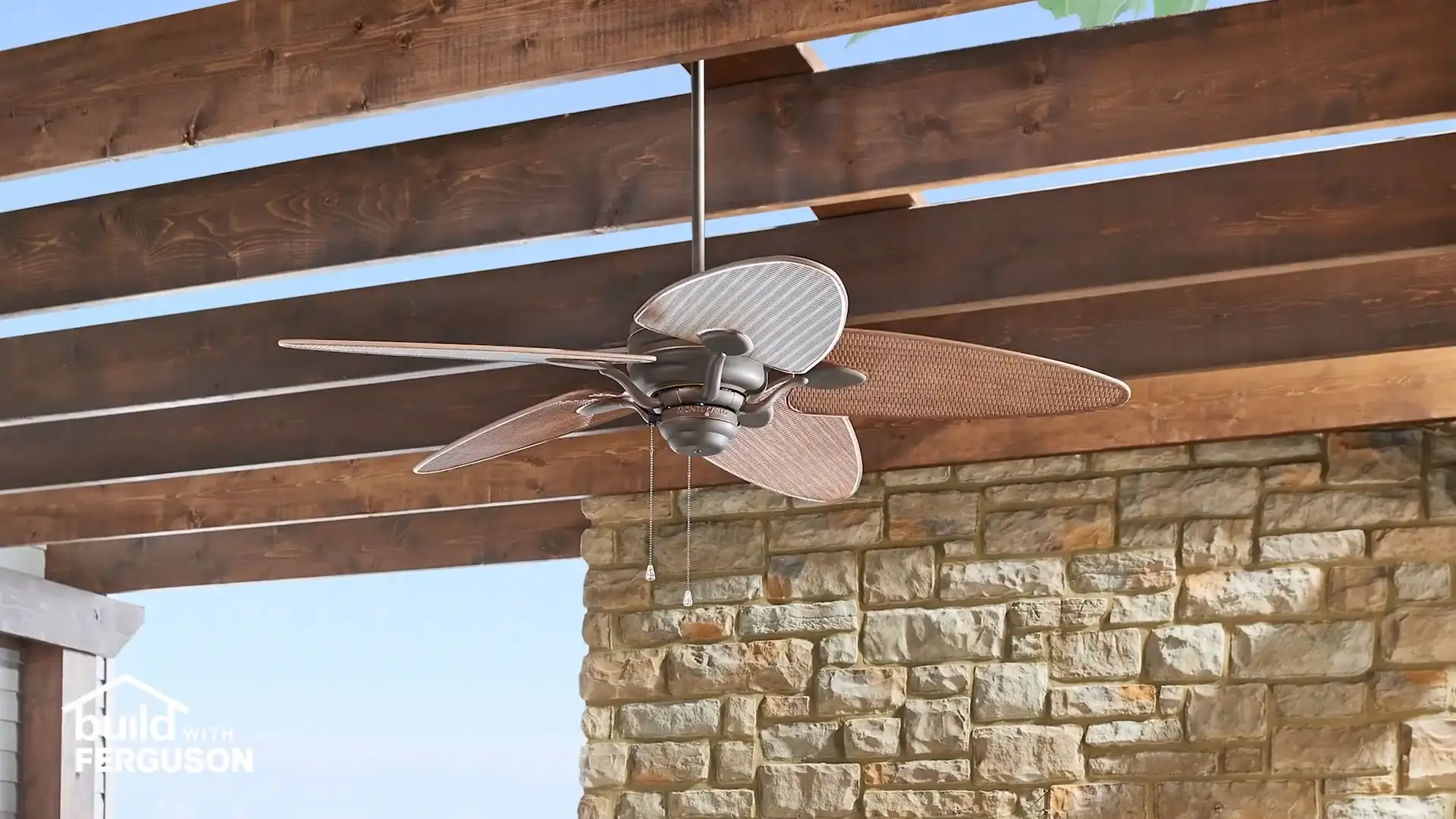quạt trần trong nhà
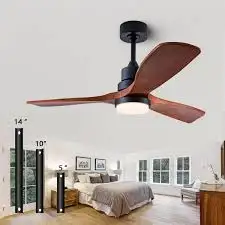
Ceiling fans have become an essential component in modern home design, serving not only as a source of comfort but also as a stylish element in interior decor. Their role extends beyond mere aesthetics; by promoting air circulation, they can significantly improve the thermal comfort of a room. In hot weather, a ceiling fan can make a space feel cooler by providing a wind-chill effect without drastically lowering the temperature like an air conditioner. Conversely, during colder months, they can be used to circulate warm air that rises to the ceiling, enhancing energy efficiency. The addition of a ceiling fan can transform a room from stale to inviting, making it a crucial consideration when designing or renovating any indoor space. When selecting a ceiling fan, several factors must be taken into account to ensure it meets both functional and aesthetic needs. The size of the room is paramount; a fan that is too small will struggle to circulate air effectively, while one that is too large can overpower a small space. Generally, for rooms up to 75 square feet, a fan with a blade span of 29 to 36 inches is ideal. For larger areas, such as living rooms or open concepts, consider models with blade spans of 48 inches or more. Furthermore, the height of the ceiling plays a crucial role. Fans should ideally be installed 8 to 9 feet above the floor, with longer downrods available for higher ceilings. Additionally, the style of the fan should harmonize with the existing decor, whether it’s modern, traditional, or eclectic. Materials, colors, and blade design can add unique character and enhance the overall theme of the room. In today’s eco-conscious world, energy efficiency is a significant factor when choosing a ceiling fan, particularly when integrating it with existing heating and cooling systems. Many modern fans are designed to be energy efficient, operating on as little as 40 watts, which can result in considerable savings on energy bills. Look for fans with the ENERGY STAR label, indicating they meet energy efficiency guidelines set by the U.S. Environmental Protection Agency. Additionally, technological advancements have led to features such as remote control operation, smart home integration, and even voice activation capabilities. These innovations not only enhance convenience but also allow for greater customization of airflow settings and operational schedules, making it easier to maintain a comfortable environment throughout the day. Once you have selected and installed the perfect ceiling fan, maintenance becomes key to its longevity and performance. Regular cleaning is essential; dust can accumulate on the blades and motor, which can hinder efficiency and can also become a health hazard. To clean, simply use a microfiber cloth or duster and avoid using water directly on the fan. It’s also wise to check the fan's balance and tightness of screws periodically; an unbalanced fan can create noise and wear out the motor quicker. If you notice strange noises or flickering lights, these could be signs of electrical issues, and it may be prudent to consult an electrician. Proper care will ensure that your ceiling fan continues to provide comfort and style for many years to come. The right ceiling fan not only enhances comfort but also complements your room’s style. With a plethora of designs available, finding the right match can be both exciting and overwhelming. For a contemporary space, sleek designs with metallic finishes and unique blade shapes can make a bold statement. Traditional spaces might benefit from classic wooden blades and ornate designs, while industrial decor could be enhanced with fans that have a raw, minimalist look. Don’t forget about color; choosing a fan that matches or contrasts well with the room's color palette can create a dynamic focal point. Also consider ceiling fans with integrated light fixtures, which can save space and provide additional lighting, improving functionality without cluttering the space. Beyond style, placement of your ceiling fan is vital for maximum airflow and efficiency. When it comes to positioning, make sure to center the fan in the room to allow for optimal air circulation. In larger rooms, it’s also effective to install multiple fans to create a uniform flow of air. For outdoor spaces such as patios or porches, ensure that the fan is rated for damp or wet conditions to prevent damage. In rooms with sloped ceilings, adjustable downrods can help achieve the ideal height for airflow, while fans with a flush mount design are ideal for low ceilings. Correct placement not only enhances comfort but can also significantly improve energy efficiency in your home. Selecting the perfect ceiling fan requires thoughtful consideration of multiple factors, including size, style, and efficiency. The right choice not only elevates your indoor space's aesthetics but also enhances comfort and energy savings. Furthermore, integrating modern technology can increase convenience and usability. Most importantly, maintaining your ceiling fan ensures it continues to serve its purpose effectively. With endless options available, conducting thorough research and perhaps seeking professional advice can lead you to a perfect fit that meets your specific indoor comfort and decor needs.Discover the Perfect Ceiling Fan to Elevate Your Indoor Space Comfort and Style
Understanding the Importance of Ceiling Fans
Factors to Consider When Choosing a Ceiling Fan
Energy Efficiency and Technology Features
Maintaining Your Ceiling Fan for Longevity
The Perfect Style to Enhance Your Decor
Choosing the Right Style for Your Space
Placement Tips for Maximum Effectiveness
Final Thoughts on Ceiling Fans
Frequently Asked Questions (FAQ)
How do I determine the size of ceiling fan I need for my room?
To determine the correct size of a ceiling fan, measure your room's square footage and choose a fan with an appropriate blade span. For example, rooms up to 75 square feet typically require a fan with a blade span of 29 to 36 inches, while larger spaces may need fans of 48 inches or more.
Can ceiling fans operate in reverse?
Yes, many modern ceiling fans have a reverse function that allows you to change the rotation direction of the blades. This function can be used to push warm air down in winter and cool air down in summer, improving energy efficiency throughout the year.
Do ceiling fans use much electricity?
No, ceiling fans are generally energy efficient and use significantly less electricity compared to air conditioning units. Many fans operate on as little as 40 watts, contributing to lower energy bills when used properly in conjunction with your home's heating and cooling system.

